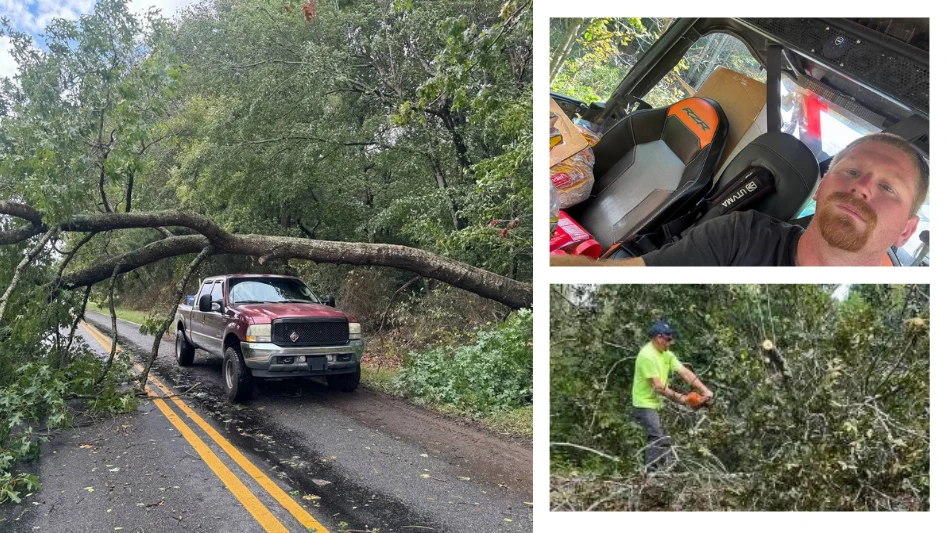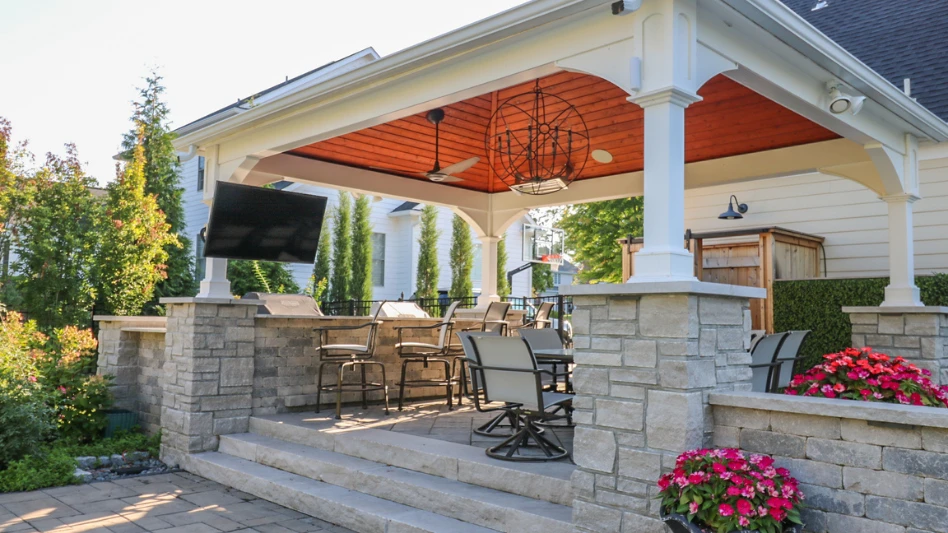Today’s landscape lighting products make it relatively easy for the green industry professional to get into the business of illuminating the landscapes of residential and commercial clients.
Low voltage lighting, with its ease of installation and maintenance and relatively small electrical risk as compared to regular line voltage, allows professionals with a minimum of training to install lighting. However, the market is beginning to mature.
How mature is the market? Manufacturers have long pointed to the inexpensive lighting systems that many homeowners installed in the 1980s as a primary driver of demand today, but John Grembowski, owner of Landscape Lighting, Sterling Heights, Mich., believes that bad lighting is now hurting landscape lighting installers.
“When people see bad lighting today, they look at it and think that’s all they can get,” explained Grembowski. “I hear manufacturers say that the more lighting that gets put out in the system the better, but I don’t agree. Bad lighting hurts everyone who installs landscape lighting.”
MONEY TO BURN. Meeting the expectations of high-end clientele presents both a challenge and an opportunity for contractors interested in lighting installation. Customers looking for landscape lighting today are among the most affluent in their areas, and it’s getting easier to sell the benefits of lighting, according to Grembowski. In the seven years he has been designing and installing lighting systems, the property size and dollar volume per job has increased dramatically.
“It’s a high-end oriented product and service,” agreed Polly Fenig, co-owner of Lightscapes of Charlotte, Charlotte, N.C. “The average home value of our clients’ residences is about $350,000, and they are usually the larger homes in the area,” she noted.
An important aspect of drawing in the high-end customer is targeting specific areas of a city or region and marketing to them properly. Paul Sessel, president of Creative Designs, Overland Park, Kan., developed a four-color brochure featuring examples of his work and targeted 5,000 of the most affluent homes in his area with a mailing. A tear-out, postage reply card was included in the mailing that offered a no-cost estimate.
Fenig said that she bombards selected homes in Charlotte with flyers to generate lighting sales. “When we get calls from these people they tell us, ‘Well, we were going to call you the last time a flyer came, but we lost it,” she said. “So I know this strategy works.”
Just as critical to success is the generation of referral business. Lighting contractors noted that upwards of 90 percent of their new business is generated by existing customers. To encourage customers to talk to their friends, companies will create incentive programs for discounts on future purchases. Sessel will actually put an additional light on the referring customer’s existing system if he can sell the referral.
| Know Your Transformers |
There is some concern, however, about some transformers on the market that fall short of accepted standards. Last year, Underwriters Laboratory and the National Electric Code adopted the standard UL 1838, which describes how low voltage products should be constructed and tested. Clay Martenics, vice president of operations with California Landscape Lighting, Westlake Village, Calif., urges lighting contractors to buy products that have been tested and approved by UL, NEC, Applied Research Labs or Electrical Testing Laboratories to ensure that the transformer meets UL 1838 standards. Often times, local codes will mirror NEC codes, so purchasing an approved transformer will help you avoid costly replacement by the order of a local inspector, Martenics noted. |
DESIGN ELEMENTS. There are several factors to consider when creating lighting designs. Choosing the type of fixture to use is one major consideration, and some companies have chosen to go with one product to create an identifiable style. Fenig purchases a custom made, solid copper fixture from a manufacturer in Tennessee and sells only the one line to customers.
Sessel also uses just one manufacturer of fixtures. “We’ve had good luck with the product in terms of performance, but also in servicing and providing warrantees on the equipment,” he said.
The other important product consideration is the transformer, which converts the structure’s line voltage into current that is usable for the low voltage system. Transformers come in a variety of electrical capacities to accommodate the needs of the system being designed. All of the lighting contractors noted the importance of having plenty of electrical capacity.
“We always give the client more transformer power than they actually need for the system we are installing,” said Sessel. “I’d say half of our clients don’t realize how much they will like what they see when the lights are in. So a more powerful transformer will allow us to add on to the system later without having to upgrade the transformer.”
As in overall landscape design, finding out what is important to the customer is paramount to a successful project. “The first thing we discuss is security,” said Grembowski. “We want to ensure that there are no dark areas in the front of the house. We also talk about safety issues, such as pathlighting. Then, we move into the backyard, where we are able to get more creative with dramatic tree lighting, shadowing and other effects. We sell an entire package — if they don’t do everything, it won’t look right.”
| Accent Lighting Glossary |
There are some generally accepted terms for the techniques used in accent lighting, which are listed below: DOWNLIGHTING or MOONLIGHTING – This technique simulates the affect of moonlight. Fixtures are placed in trees or on buildings to create a soft downlight while casting patterns through branches. SPOTLIGHTING – Used to highlight a specific architectural element or significant specimen plant such as a dramatically shaped tree, spotlighting creates a focal point in the lighted landscape. Use of one strong focal point or several smaller fixtures to call attention to several features is also spotlighting. GRAZING – This technique uses a light source placed close to a textured surface, such as brick, stucco or the bark of a tree. The light catches the high points in the texture and illuminates them, while simultaneously creating shadows in the low points. SILHOUETTING – Light is bounced off a vertical surface behind a dramatic landscape feature, such as a tree or statue. From the front, the object stands out in front of the lighted background. SHADOWING – In this case, the dramatic landscape object has light shined directly onto it, casting a shadow against a vertical structure behind the object. The intensity of the light and the distance the light is placed from the shadowed object affects the size and shape of the shadow created. UPLIGHTING – A recessed or surface-mounted light is angled up to display a tree, artwork or structure. CROSS LIGHTING – Two or more light sources are used from above or below a tree or object to illuminate an object from different directions. The resulting effect is that the object appears to be more three dimensional. Information provided by Kichler Lighting, Cleveland, Ohio. |
SAVING DOLLARS. Successful lighting contractors have devised some common sense ways to reduce their overall costs. First, they suggest buying in bulk whenever possible. This includes the wire, the transformer and some of the other standard electrical components. Usually fixtures are not bought in bulk, except for fixtures such as well lights that are more for function than appearance.
Sessel said that running extra wire to areas of the landscape that are not in the plan for lighting is critical to savings down the road. “The lighting always looks nicer than they anticipate, so many times we’ll get a call from the customer wanting more lighting. That way, the wire is already in place.”
Finally, Constantine Pergantis, President of Nite Lights, North Potomac, Md., said that getting comfortable with the products and how they fit into settings saves time.
“One of the things that used to drive me crazy was working all day, then going out at night to test fixtures at a client’s house,” he said. “I’ve gotten to where I can see a landscape in the daytime and be able to determine what bulb type and fixture should be used. Get familiar with the bulbs and what they can do, and how their light types differ. It will save a lot of time and headaches.”
The author is Managing Editor of Lawn & Landscape magazine.

Explore the May 1997 Issue
Check out more from this issue and find your next story to read.





